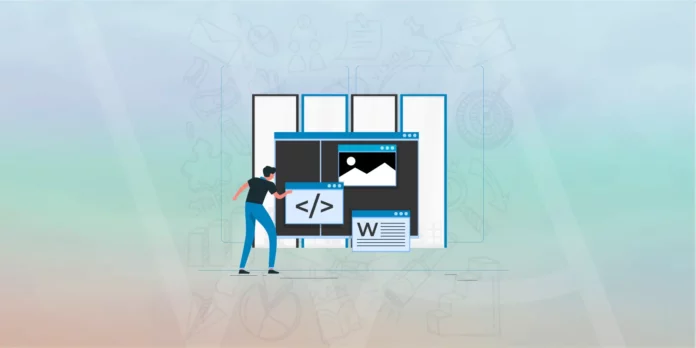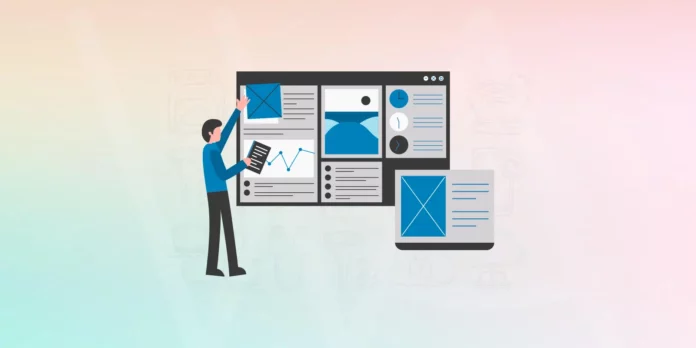A well-structured and organized navigation menu is essential for any website. It allows visitors to quickly find the content they are looking for, improving their overall browsing experience. In this tutorial, we will discuss various techniques to enhance and improve the navigation menu of your WordPress website.
Table of Contents
1. Utilize the Custom Menu and Appearance Menus Screen
WordPress provides a built-in feature called Custom Menu and Appearance Menus Screen that allows you to define navigation menus on your site. This feature is easy to use and enables you to create custom menus that link to pages, posts, categories within your site, or other external websites. By utilizing this feature, you can have full control over the structure and content of your navigation menu.
2. Add Breadcrumbs to WordPress Navigation
Breadcrumbs are a useful navigation tool that provides a trail for users to follow back to the starting or entry point of your website. They typically appear horizontally across the top of a web page, below title bars or headers. Breadcrumbs consist of links that represent the hierarchical structure of your site.
To add breadcrumbs to your WordPress navigation, you can use plugins like BreadCrumb NavXT or Smart Breadcrumbs. These plugins allow you to customize the appearance and functionality of breadcrumbs on your site.
3. Customize WordPress Next and Previous Links
By default, WordPress displays “<< Next” and “Previous >>” links at the bottom of each page. However, this navigation method can be inefficient for users as they have to click multiple times to access specific pages.
To improve the navigation and provide a more user-friendly experience, you can use plugins like WP-PageNavi or WP-Page Numbers. These plugins create a linked list of pages with options to jump to specific pages, making it easier for visitors to navigate through your content.
4. Add Next and Previous Links to WordPress Single Pages
While the aforementioned plugins improve navigation for multiple pages, they may not work for single posts. However, you can modify the “single.php” file of your theme to show linked titles to previous and next posts.
By adding the following code to your “single.php” file, you can display prominent links to the previous and next posts:
<div>
<div><?php previous_post_link('« Post before this: %link') ?><br /></div>
<div><?php next_post_link('%link » Post After This') ?></div>
<div style="clear:both;"></div>
</div>
Customize the code according to your theme design to make the previous and next post links more noticeable to visitors.
5. Restrict Access to Certain Pages Based on User Roles
If you want to hide specific pages, posts, custom post types, or categories based on user roles, you can use the “Pages by User Role for WordPress” plugin. This plugin allows you to restrict access to content depending on the user’s role, removing the pages or categories from search results and menus when the user is not logged in.
By utilizing this plugin, you can create a more personalized and targeted navigation experience for different user roles.
6. Customize Excerpts for Homepage and Other Pages
Excerpts are short summaries of your posts that encourage readers to click the “Read More” link to access the full content. By default, excerpts can be added in the “Excerpt” box below the post content box.
To create excerpts on your homepage, you can use plugins like Homepage Excerpts. Additionally, you can modify “the loop” in your theme and change “_content” to “_excerpt” on all other pages.
By customizing the use of excerpts, you can create more engaging and informative navigation for your visitors.
7. Implement Multi-Paged Navigation in WordPress
For longer posts or articles, it can be beneficial to split the content into multiple pages. WordPress provides the functionality to create multi-page posts using the nextpage button or the <!--nextpage--> quicktag.
To enhance multi-paged navigation, you can utilize the Multi-page toolkit plugin. This plugin extends the functionality of multi-page posts by allowing you to create titles for each page, provide different pagination options (previous and next links, page title links, numbered links), and display the total number of pages a post has.
8. Display Related Posts After Content
Displaying related posts after the content of a post can significantly improve user engagement and encourage visitors to explore more of your content. There are several plugins available to automate the insertion of related post blocks.
Plugins like “My Related Posts” and “Yet Another Related Posts Plugin (YARPP)” offer options to display relevant posts based on various criteria and allow you to customize the appearance of the related post section.
9. Showcase Popular Posts with Post Views
Showcasing your most popular posts can attract visitors and keep them engaged with your website. The “WP Post Views” plugin provides a sidebar widget that displays your most viewed posts. By utilizing this plugin, you can easily showcase your best content and encourage visitors to explore your site further.
10. Use Plugins to Extend Navigation Functionality
WordPress offers numerous plugins that can enhance and extend the functionality of your navigation menu. Some notable plugins include:
- ConMe: A plugin that enables you to create and manage content groups, allowing for easy categorization and styling of your WordPress contents.
- Easy Custom Content Types: A plugin that simplifies the creation of custom post types, taxonomies, and meta boxes without the need for complex coding.
- WordPress Content Types Manager: A plugin that allows you to create custom post types, custom taxonomies, custom fields, custom shortcodes, and custom theme options with ease.
- WP Pre-Advertisement: A plugin that allows you to show advertisements before displaying the actual post content, providing additional monetization options for your website.
- Post Validator: A plugin that helps ensure the quality of your posts by validating them before publishing, particularly useful for multi-author websites.
- Premium Featured Posts Slider: A plugin that allows you to create sliders showcasing your content, with various layout and customization options.
11. Enhance Category Navigation with Images
Assigning images to category names can enhance the visual appeal of your navigation menu. You can replace text with category images to make it more visually engaging for visitors. Plugins such as Category Icons or Category Icons Lite enable you to assign icons to categories, which will be displayed next to the category titles in the navigation menu.
12. Customize Sidebar Navigation
Customizing the sidebar navigation can offer additional navigation elements and provide a more tailored user experience. You can explore various options such as listing custom post types, creating custom menus, or utilizing plugins like iFrameWidgets to customize your WordPress sidebar.
13. Customize the WordPress Admin Menu
The WordPress admin menu can be customized to improve the user experience for website administrators. Plugins like Friendly Admin Menu provide a more logical and easy-to-use tabbed interface with large icons, making it easier to navigate through the admin dashboard and access essential settings.
Conclusion
By following these techniques and utilizing the suggested plugins, you can significantly improve the navigation menu of your WordPress website. A well-structured and user-friendly navigation menu enhances the overall browsing experience for your visitors, keeping them engaged and encouraging them to explore more of your content.
FAQs: Improving Navigation Menu
How do I customize the navigation menu in WordPress?
To customize the navigation menu in WordPress, follow these steps:
1. Log in to your WordPress admin dashboard.
2. Go to “Appearance” and select “Menus”.
3. Create a new menu by clicking on the “Create a new menu” link.
4. Give your menu a name and click on the “Create Menu” button.
5. To add items to your menu, select the desired pages, posts, or custom links from the left-hand side and click on the “Add to Menu” button.
6. Arrange the menu items by dragging and dropping them into the desired order.
7. To create submenus, drag a menu item slightly to the right below another item. This will make it a submenu item.
8. Customize the menu item labels by clicking on the downward arrow next to each item and modifying the “Navigation Label” field.
9. Set the menu location by checking the box next to the desired location under the “Menu Settings” section.
10. Save your changes by clicking on the “Save Menu” button.
That’s it! Your navigation menu should now be customized according to your preferences.
How can I improve my navigation bar?
To improve your navigation bar, consider the following steps:
1. Keep it simple: Limit the number of menu items to the most important ones. A cluttered navigation bar can confuse users and make it harder for them to find what they’re looking for.
2. Use descriptive labels: Make sure your menu items have clear and concise labels that accurately represent the content or sections they link to. Avoid generic labels like “Products” or “Services” and be specific.
3. Prioritize important pages: Place your most important pages or sections towards the beginning of the navigation bar. Users tend to focus on the left side of the navigation bar, so important items there are more likely to be seen and clicked.
4. Ensure easy access: Make sure your navigation bar is prominently displayed and easily accessible on all pages of your website, ideally at the top of the page. Users shouldn’t have to search for it or scroll to find it.
5. Optimize for mobile: Ensure your navigation bar is responsive and works well on mobile devices. Consider using a hamburger menu or other mobile-friendly navigation patterns to provide a smooth user experience on smaller screens.
6. Use dropdown menus sparingly: If you have a large number of subpages or sections, use dropdown menus to organize them. However, avoid having too many nested levels, as it can make navigation complicated and overwhelming.
7. Provide search functionality: Consider adding a search bar within your navigation bar to allow users to quickly search for specific content if they can’t find it through the menu.
8. Test and analyze: Continuously monitor user behavior and conduct A/B testing to optimize your navigation bar. Pay attention to user feedback and make adjustments accordingly.
Remember, a well-designed navigation bar can greatly enhance user experience and improve the overall usability of your website.
What makes a good navigation menu?
A good navigation menu should be:
– Clear and intuitive: Make sure the menu labels are descriptive and easy to understand, allowing users to quickly navigate through your website.
– Concise: Keep the number of menu items to a minimum, ideally less than 7, to avoid overwhelming users.
– Consistent: Maintain the same navigation structure across all pages of your website to provide a consistent user experience.
– Visible: Place the navigation menu in a prominent location, such as the header or sidebar, ensuring it is easily accessible on every page.
– Mobile-friendly: Optimize your navigation menu for mobile devices by using responsive design or implementing a mobile menu that is easy to use on smaller screens.
– Search engine friendly: Use text-based links instead of JavaScript or Flash-based menus to ensure search engines can crawl and understand your navigation.
How do I create a dynamic navigation menu in WordPress?
To create a dynamic navigation menu in WordPress, follow these steps:
1. Log in to your WordPress admin panel.
2. Go to “Appearance” -> “Menus”.
3. Click on “Create a new menu” and give it a name.
4. Select the pages, categories, or custom links you want to add to your menu from the left-hand column.
5. Drag and drop the items to arrange them in the desired order.
6. To make the menu dynamic, check the “Automatically add new top-level pages” option. This will automatically add new pages to the menu when they are created.
7. Once you’ve added all the items, click the “Save Menu” button.
8. To display the menu on your website, go to the “Manage Locations” tab.
9. Select the desired menu from the dropdown for the “Primary Menu” location.
10. Click the “Save Changes” button.
Your dynamic navigation menu will now be displayed on your WordPress website, and any new top-level pages will be automatically added to the menu.






